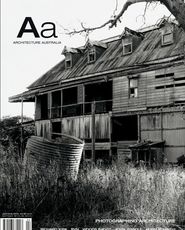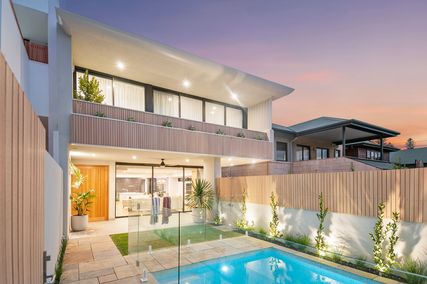WHEN I TOOK over as the 65th National President of the RAIA on 27 May this year, I gave an outline of the key issues that I wished to see National Council address during my term in this role. Included on this list was the need to continue actively pursuing the promotion of architecture (through the Year of the Built Environment, improved media publicity for architects and architecture, and the appointment of Government Architects); the need to curtail the escalation in Professional Indemnity Insurance premiums; continuing the process of review as new Architects Acts come into force in a number of States and Territories; and the need for the RAIA to take a lead role in continuing education and architectural research.
With these initiatives fresh in my mind, it was therefore of great interest to meet with ten other national presidents from architectural institutes around the world at the annual convention of the American Institute of Architects (AIA) in Chicago to discuss the key issues they were facing in the practice of architecture in their own countries. There were many similarities and many benefits in the exchange of strategies to address these issues. In addition, both the American Institute of Architects Convention and the Festival of Architecture held in Quebec City, organized by the Royal Architectural Institute of Canada (RAIC), adopted key themes focusing on the future of the built environment and predicted changes to the nature of the architectural profession.
Eugene Hopkins, the President of the American Institute of Architects, outlined the AIA’s vision of the future by stating their belief that the profession of architecture is changing from being what architects do to being about what architects know. This is a significant change in the architectural paradigm. Inherent in this change is a different way of viewing how architects are paid for their services.
Instead of being paid for what they do (often seen as “just a set of drawings”), they could (and should) be paid for what they know – and how they apply that knowledge for the client’s benefit. As a consequence, the AIA is currently transforming itself to deliver the services architects will require to become a knowledge-based profession. In Eugene’s words, “Knowledge is the AIA’s legacy and knowledge is most assuredly the AIA’s future: finding it, capturing it, analyzing it, and sharing it. The challenge for us as architects is to keep up with it, feed on it, share it, and, in the process, grow and flourish as a community. To realize this potential, we must advocate and model a culture of sharing within our profession, the construction industry, and our communities.” ›› In discussing this paradigm shift with a number of the AIA’s board of directors, I noted many similarities between the changes that the AIA is implementing and those recently made by the RAIA at a national level, including setting up a new National Committee for Continuing Education and adopting a National Policy for Architectural Research.
The future needs of our profession were also addressed by the theme of the RAIC’s Festival of Architecture in Quebec, which attempted to predict the future by stimulating debate on how architecture (and implicitly architects) will be viewed in the years to come. RAIC members were asked to predict current trends and then to forecast the community’s view of these trends, as well as what Canadians would like them to be. Once these portents were analysed, the debate shifted to what this meant for Canadian society as a whole. The concept of collective risk was enunciated – who bears the risk if just anyone is allowed to make an architectural statement? What risk does the possible decline of architecture represent to society as a whole, and who is (or should be) responsible for the future quality of the built environment?
My interest in the themes of these events and the views of our North American colleagues was more than academic. With the midpoint review of the Year of the Built Environment now underway, the major conclusions being put together include the way in which our professional activities will be viewed by future generations and the changes we must initiate to ensure that the momentum of YBE 2004 is not lost.
One major outcome of YBE 2004 has been the opportunity for the Institute to influence government decision-making throughout Australia by setting the agenda for this initiative. By engaging with governments at the most senior level, the RAIA is making a difference. Objectives that we have been seeking for many years are now starting to be accomplished. Much of this is due to the concerted effort made by all the voluntary members of the committees that make up the RAIA, including the National Council and National Executive ably led by my predecessor David Parken, who I believe has enhanced the standing of the Institute and acquitted himself with distinction as the 64th National President of the RAIA.
I look forward to continuing to work with David in his new role and with Bob Nation as the new National President-Elect, to ensure that the RAIA continues to address the current concerns of architects in Australia and proactively meet the challenges that lie ahead for our profession in the future.
Warren Kerr FRAIA, HONAIA
National President RAIA















